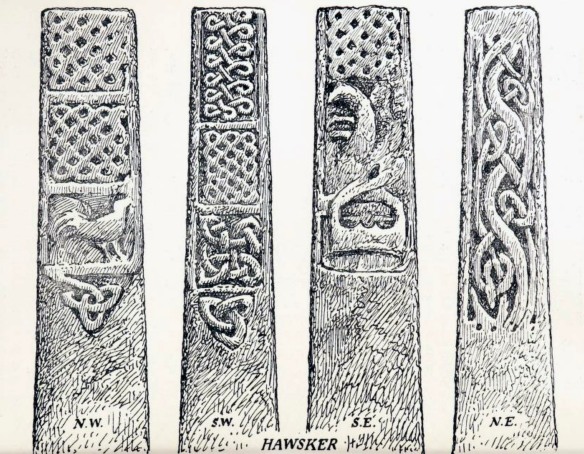Hawsker Cross is thought to date from the 10th century, when a church or chapel may have stood on this site, it is missing the original cross-head.

My snapshot doesn’t do the carvings justice, but they have further worn since these drawing were made about a century ago.

The patterns are said to show strong Scandinavian influences, which would have arrived with the Danes/Vikings in Whitby after 867.
 Show on map
Show on map





















